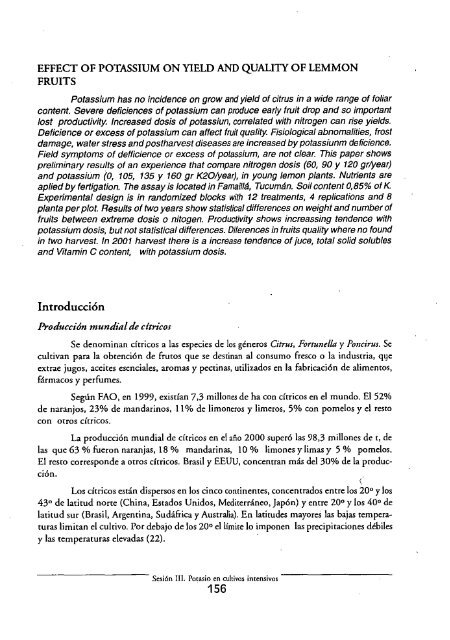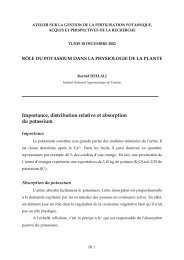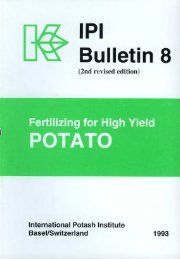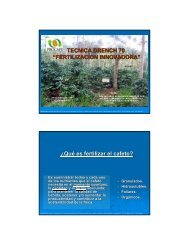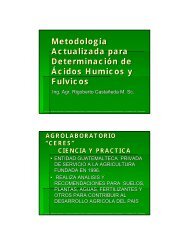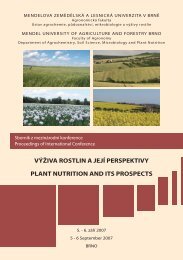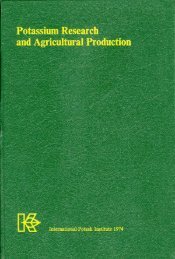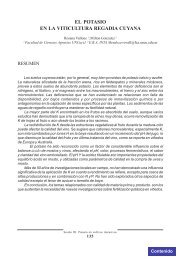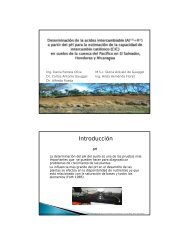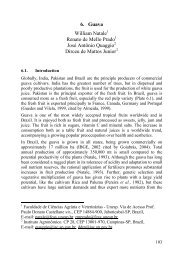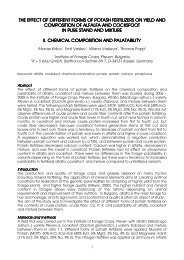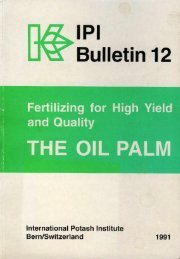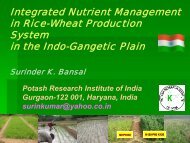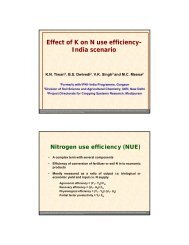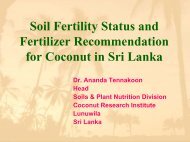Download publication - The International Potash Institute
Download publication - The International Potash Institute
Download publication - The International Potash Institute
Create successful ePaper yourself
Turn your PDF publications into a flip-book with our unique Google optimized e-Paper software.
EFFECT OF POTASSIUM ON YIELD AND QUALITY OF LEMMON<br />
FRUITS<br />
Potassium has no incidence on grow and yield of citrus in a wide range of foliar<br />
content. Severe deficiences of potassium can produce early fruit drop and so important<br />
lost productivity. Increased dosis of potassiun, correlated with nitrogen can rise yields.<br />
Deficience or excess of potassium can affect fruit quality. Fisiological abnomalities, frost<br />
damage, water stress and postharvest diseases are increased bypotassiunm deficience.<br />
Field symptoms of defficience or excess of potassium, are not clear. This paper shows<br />
preliminary results of an experience that compare nitrogen dosis (60, 90 y 120 gr1year)<br />
and potassium (0, 105, 135 y 160 gr K201year), in young lemon plants. Nutrients are<br />
aplied by fertigation. <strong>The</strong> assay is located in Famaillc, Tucumjn. Soil content 0,85% of K<br />
Experimental design is in randomized blocks with 12 treatments, 4 replications and 8<br />
planta per plot. Results of two years show statistical differences on weight and number of<br />
fruits between extreme dosis o nitogen. Productivity shows increassing tendence with<br />
potassium dosis, but not statistical differences. Diferences in fruits quality where no found<br />
in two harvest. In 2001 harvest there is a increase tendence of juce, total solid solubles<br />
and Vitamin C content, with potassium dosis.<br />
Introducci6n<br />
Produccidn mundial de citricos<br />
Se denominan cftricos a las especies de los g6neros Citrus, Fortunella y Poncirus. Se<br />
cultivan para la obtenci6n de frutos que se destinan al consumo fresco o la industria, q9e<br />
extrae jugos, aceites esenciales, aromas y pectinas, utilizados en la fabricaci6n de alimentos,<br />
firmacos y perfumes.<br />
Segtin FAO, en 1999, existfan 7,3 millones de ha con cfitricos en cl mundo. El 52%<br />
de naranjos, 23% de mandarinos, 11% de limoneros y limeros, 5% con pomelos y el resto<br />
con otros citricos.<br />
La producci6n mundial de cftricos en el aflo 2000 super6 las 98,3 millones de t, de<br />
las que 63 % fueron naranjas, 18 % mandarinas, 10 % limones y limas y 5 % pomelos.<br />
El resto corresponde a otros citricos. Brasil y EEUU, concentran mis del 30% de la producci6n.<br />
Los citricos estin dispersos en los cinco continentes, concentrados entre los 20 ° y los<br />
43 ° de latitud norte (China, Estados Unidos, Mediterrineo, Jap6n) y entre 200 y los 400 de<br />
latitud sur (Brasil, Argentina, Sudiftica y Australia). En latitudes mayores las bajas temperaturas<br />
limitan el cultivo. Por debajo de los 200 el l(mite lo imponen las precipitaciones d6biles<br />
y las temperaturas elevadas (22).<br />
Sesi6n III. Potasio en cultivos intensivos<br />
156


